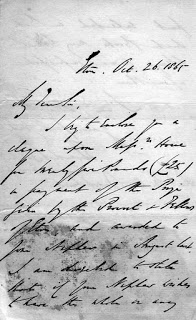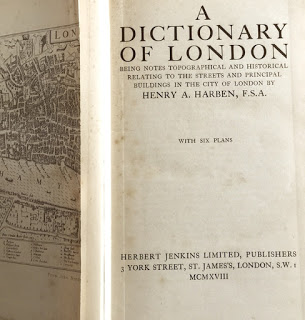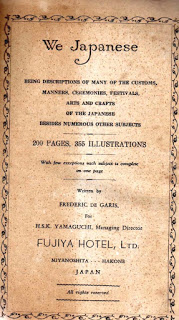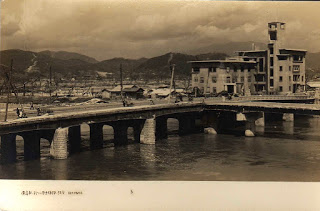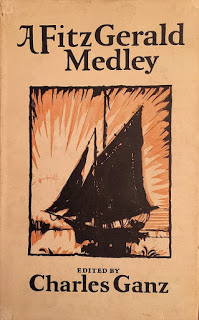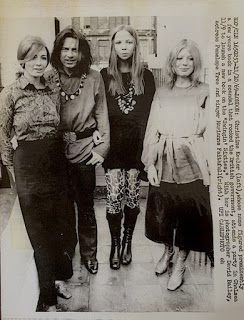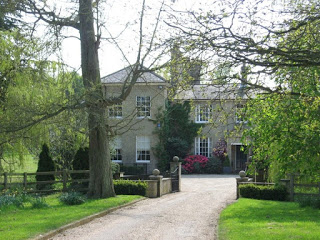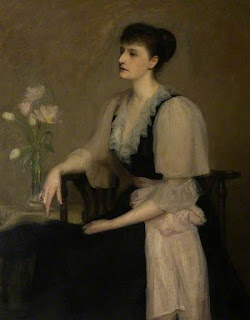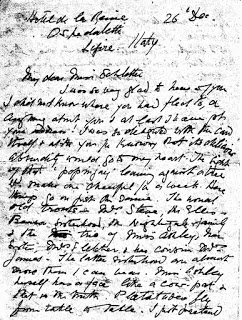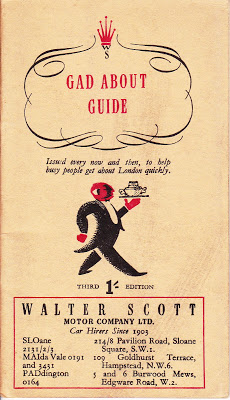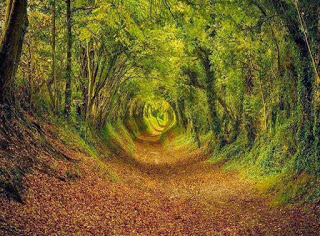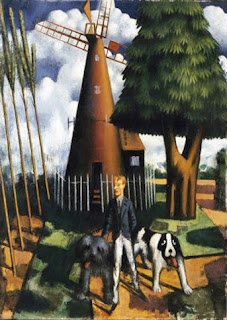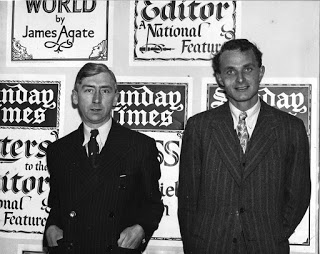
Whatever—or whoever—could have brought publicly together ‘pylon’ poet Stephen Spender (1909 – 95) and Herbert Read (1893–1968), art critic, professional writer of introductionsto other people’s books and self-styled anarchist? This press photograph gives few clues, although the most evident seems to be the large posters advertising The Sunday Times, in front of which the two men are standing. The photo was one of many in a small archive of similar material that turned up in an auction a few years ago.
The photo appears to date from around the mid thirties, which may suggest that both men were snapped at the London International Surrealist Exhibition of 1936, which was covered by al the major London papers, including the Sunday Times. However, there is no real reason why the two very different writers should have been grouped together. Spender admitted that Read had become a friend ever since the older man’s sympathetic review of his Poems (1933), but Read’s name is missing entirely from the published Journals, 1939 – 82, of Spender, who never showed much interest in Surrealism. It does not follow, of course, that there should be any connection between the two figures, who may have been snapped by a Sunday Times photographer while they visited the Exhibition.
An alternative circumstance for this pairing may have been the Spanish Civil War, which was dividing intellectuals in the mid thirties. Both Read and Spender would have supported the Communists, and indeed Spender reported to Read at this time that he had become a communist.
While Spender’s reputation has been enhanced since his death. John Sutherland’s biography and the Stephen Spender Trust has seen to that, Read’s profile, despite a biography (The Last Romantic) has faded somewhat. The view of his contemporary and fellow critic, Geoffrey Grigson is fair, I think, and echoes my own views of Read, who was once such a ubiquitous presence in the literary world.
‘He was no genius, he had no very acute perception… of the arts of painting, sculpture or writing. I would even say there was something to Wyndham Lewis’s charge that he had never looked a picture in the face, although he knew the kind of picture to look in the face…Not much of a poet, to tell the truth not much of a writer, he was an art apostle who stuck to his preaching…’ [R.M.Healey]


